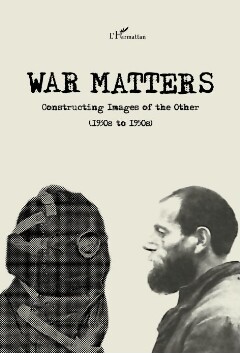Page 59 [59]
Living Images and Gestures in Wartime: The Other as an Iconoclastic Figure
against an ideology presented as illusion—as a false awareness or a lie. According to
Zaremba, those who produce iconoclastic images face a dilemma—a rejection of or
a challenge to current standards of acceptability. During wartime there is a visible
shift from the Other towards the Alien.
Gamboni points out that hostility afflicts the images of those who became
successful (1997) or it attacks those images which embody special value. As William
Mitchell puts it: “iconoclasm is not just a belief structure but a structure of beliefs
about other peoples beliefs. As such, it depends upon stereotype and caricature
(image repertoires that reside on the borders of social difference). (...) A stereotype
establishes the general set of beliefs and behaviors that are attributed to others”
(Mitchell 2005: 20). On the other hand, the caricature “deforms or disfigures the
stereotype, exaggerating some features or rendering the figure of the Other in terms
of some subhuman object in order to ridicule or humiliate” (Ibid.: 20).
Not all who are alien or Others are the iconoclasts defined by Mitchell—only
some of them are, usually those to whom we ascribe more. Further to the thought
of Mitchell, an iconoclast is one who creates an image of the Other as the idolater,
one who sets off to punish the idolaters for their false beliefs and practices, at¬
tempting to deface or destroy their images (Ibid.: 20). This is a special case of an
Other who is dangerous and charged with power. Being an idol or a ‘living’ image
is always attributed by someone else and perceived through someone else’s eyes; the
idolater him- or herself might not realise that this is what he/she is. The process
of demonisation takes place in the eyes of the iconoclasts’. This approach fits the
context of war destruction, where certain images referring to specific destruction of
meaningful objects are usually charged emotionally for one or both sides.
According to Mitchell, critique assumes a separation of good from evil,
therefore the issue of images is determined by the evaluation of values, and even
more strongly by their ‘crisis’ which results in the fact that true critique becomes,
in a sense, a default form of iconoclasm, an aspiration to destroy or expose the false
images that cast a spell on us (2005: 81). In other words, an iconoclast believes
that he is right or has a true god, while others have their lower or degraded idols
or spirits. In line with Mitchell, we might then speak about the ‘structure of
iconoclasm’. During wartime this structure would be best revealed through direct
interactions with the Other.
War images are always related to cruelty and violence. Susan Sontag (2010)
wrote about the various motivations and ways of presenting violence during WWI,
the Spanish Revolution, WWII and the Vietnam War. Sontag shows us that the
images of violence originate in various contexts under the influence of various fac¬
° As Mitchell argues, polytheism, paganism and gentle pluralism towards gods and goddesses construe
a certain general approach, which may be associated with actual forms of idolatry. Iconoclasm, on the
other hand, is a product of the three great religions of the Book. It springs from the principal rule,
according to which images are suspicious, dangerous, evil and deceitful (2005: 20).
57

